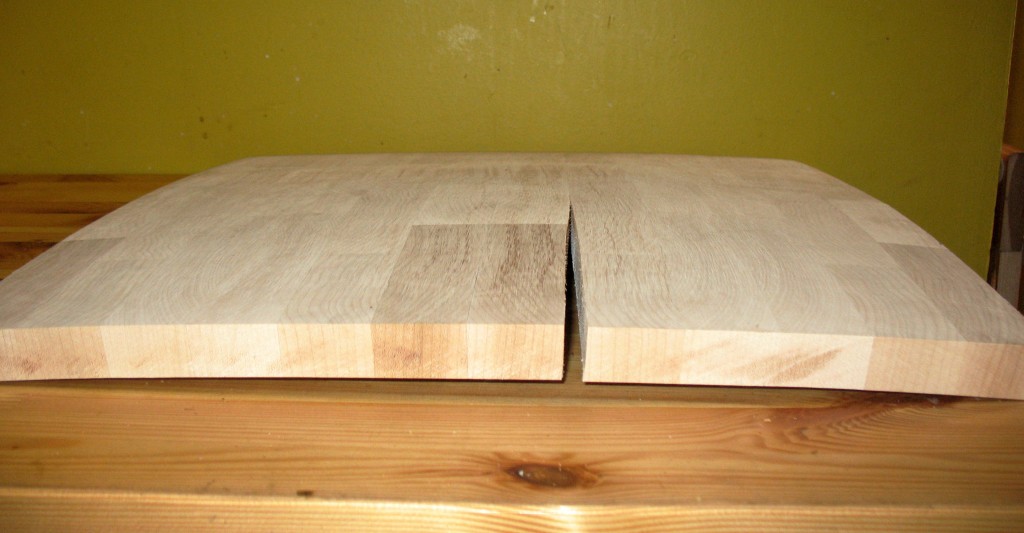Chief Woodworking’s wood movement page
As I had written on Wednesday, I am building a trophy case for a friend’s daughter. They live in parched Yuma, Arizona, while my shop is here in soggy Tampa, Florida. So, how much will the boards in my project shrink when it arrives at its new environment?
Fortunately, there are resources like today’s link of the week that can help. Chief Woodworking’s blog has some interesting information on why wood moves when humidity changes, how different cuts of wood (quartersawn vs. flatsawn) react to these changes and a calculator to determine how much a particular board will move when the humidity changes.
Now, I will be able to stack the deck in my favor. I hope.


Well obviously that is a glue line failure cause by this board being flat on a surface and drying out from just one side.
A 12″ wide board can move as much as 1/4″ or more from moist to arid regions.
If your work can be constructed and stored in a climate controlled location, and allowed to acclimate slowly, there will be few if any disasters.
Jere in Northern PA, the shop humidity can vary from 30% in the Winter with the heat on, to 75% like now in a rainy warm humid summer.
I have tested moisture in shop stored wood and it goes from 6% or less in the winter and 10% or more in the Summer. So…
moisture gains of 4-6% is what I have to deal with.
As Walter indicates, this looks like a glue line failure. But a glue line failure is vastly different than joint failure due to a change in humidity/temperature. A glue line failure is the result of using too little glue, not enough clamping pressure, not enough clamping time, or some combination of the three.
A properly glued long grain to long grain joint should be stronger than the wood around it, so if the wood IS going to split because of a change in humidity/temperature, it seems reasonable to assume it would be at a non-joint, not at a joint as shown, right?
Knowing the probable outcome of wood movement can save you a lot of headaches.
The link you include does a good job of explaining it.
Thanks Tom.